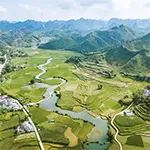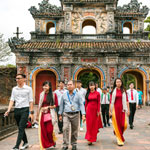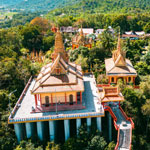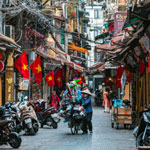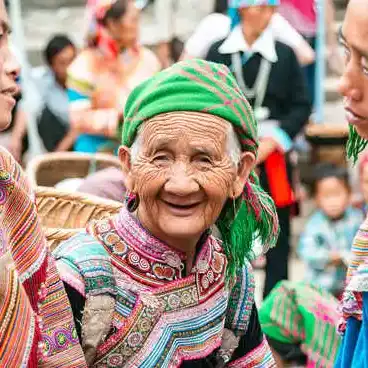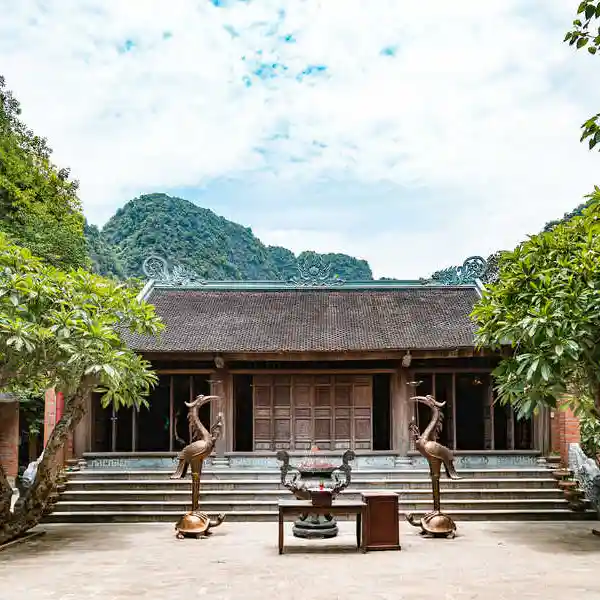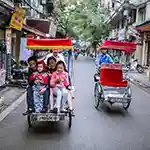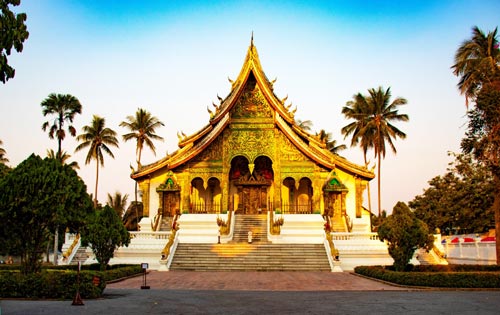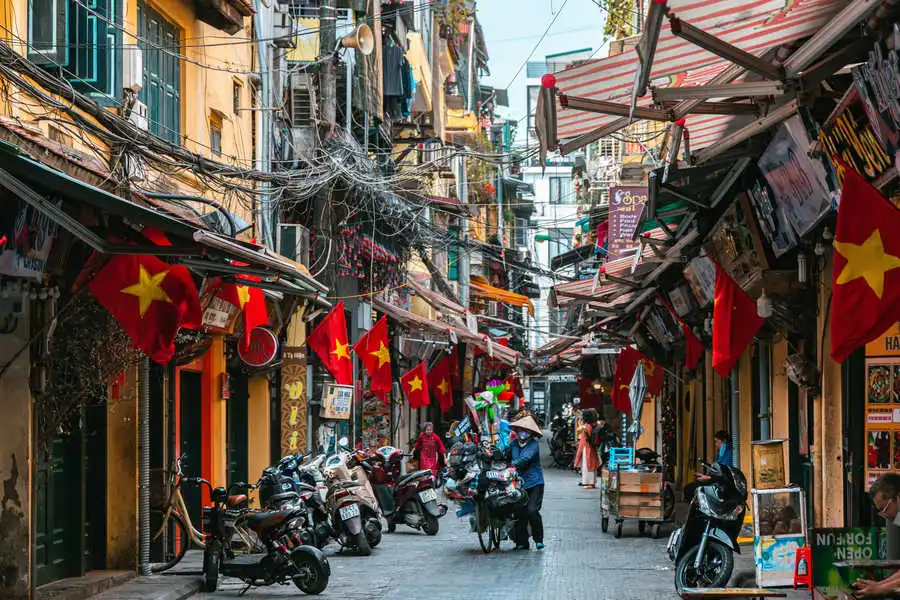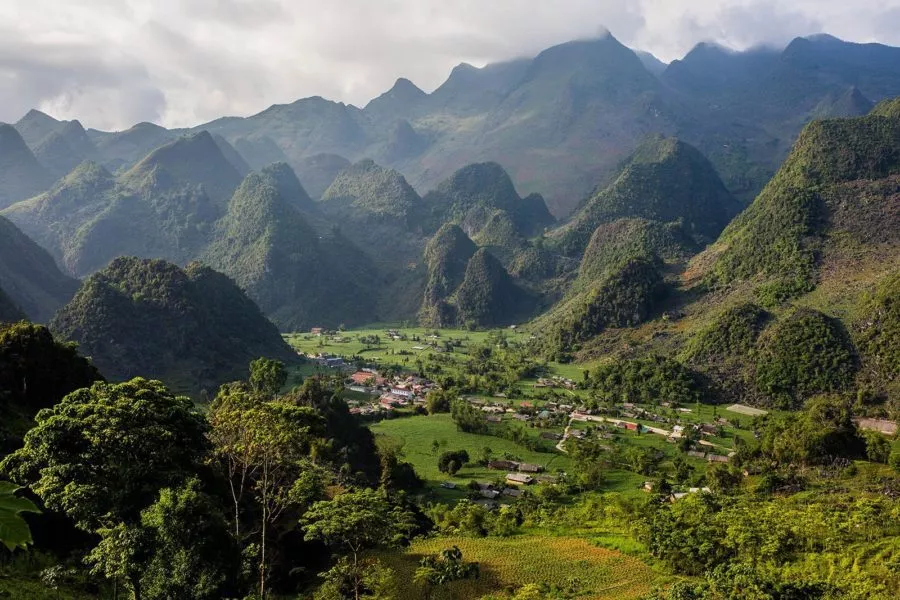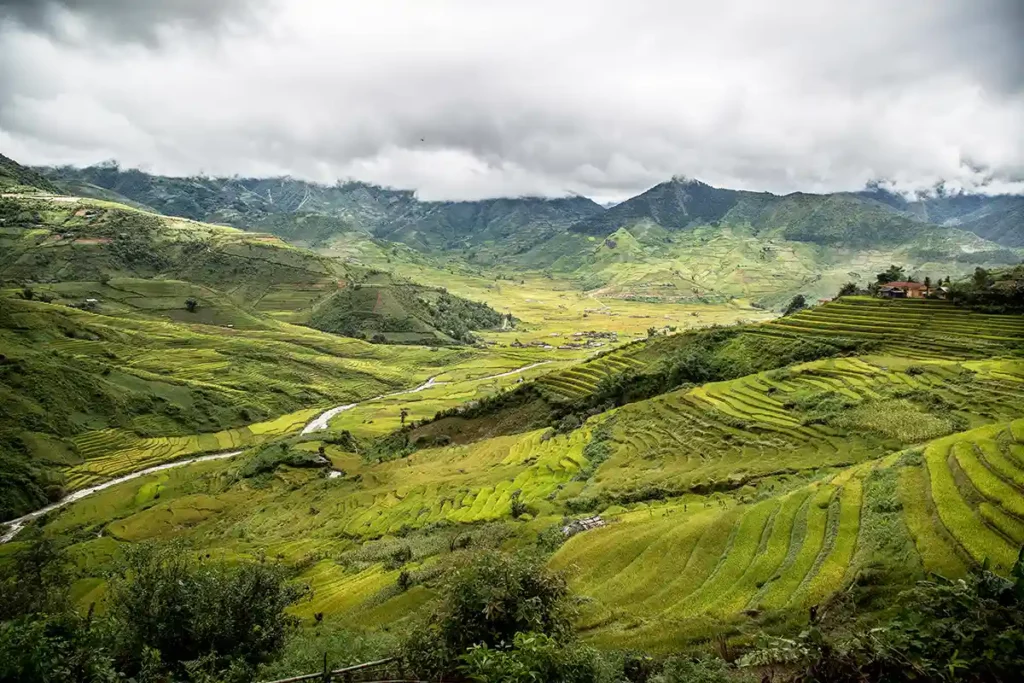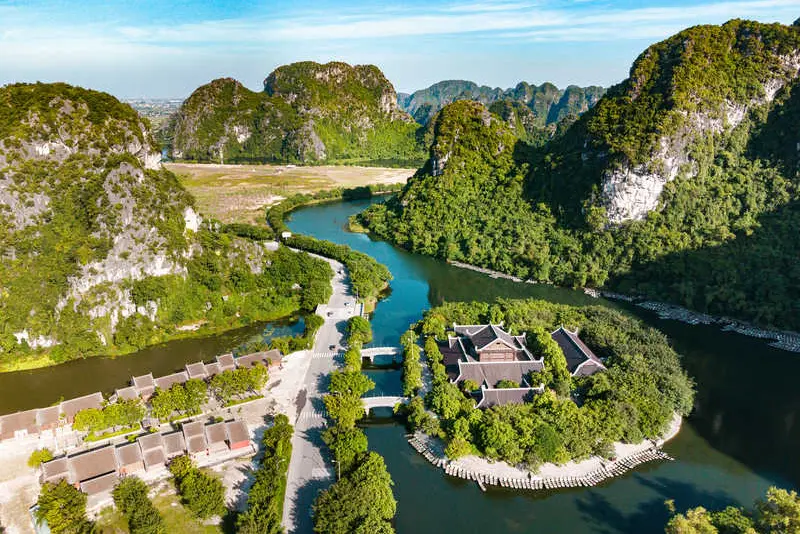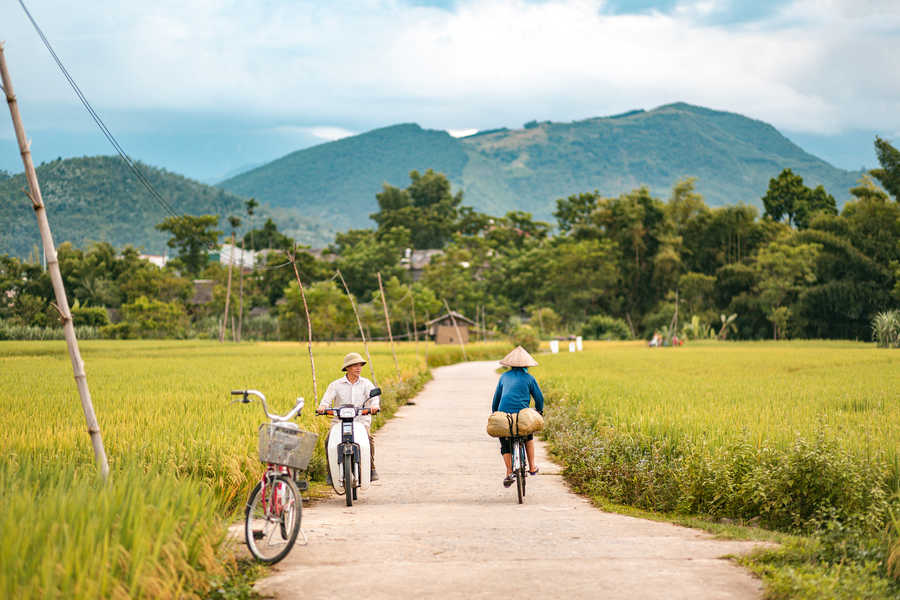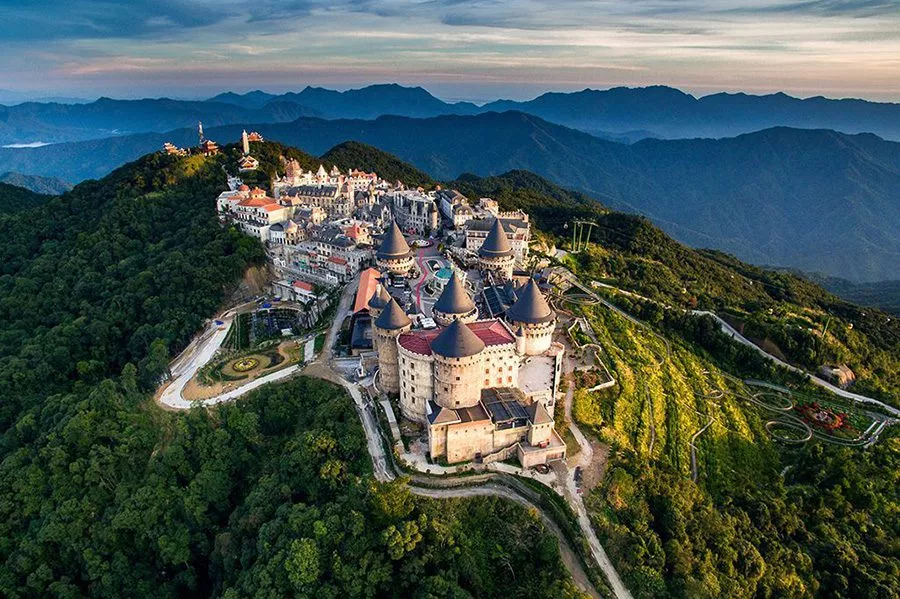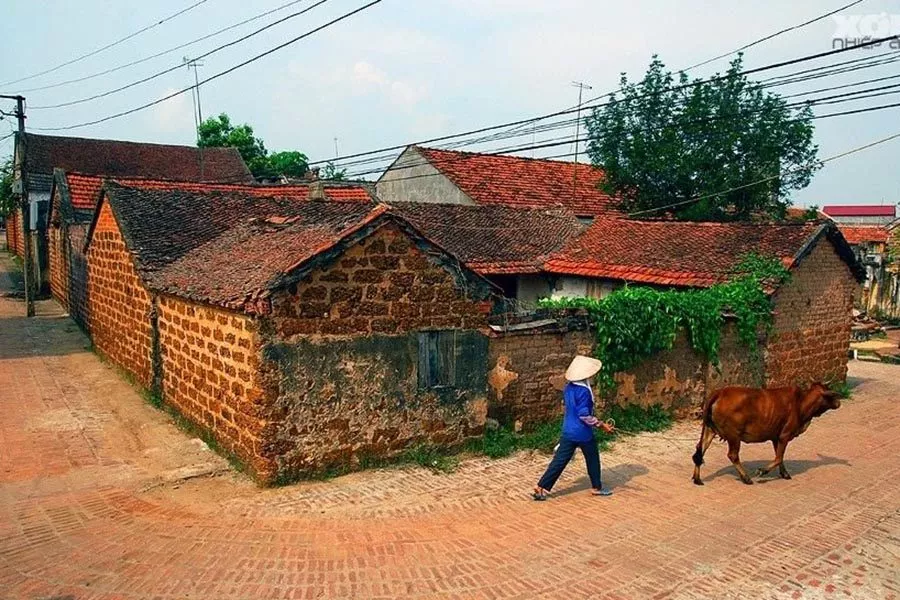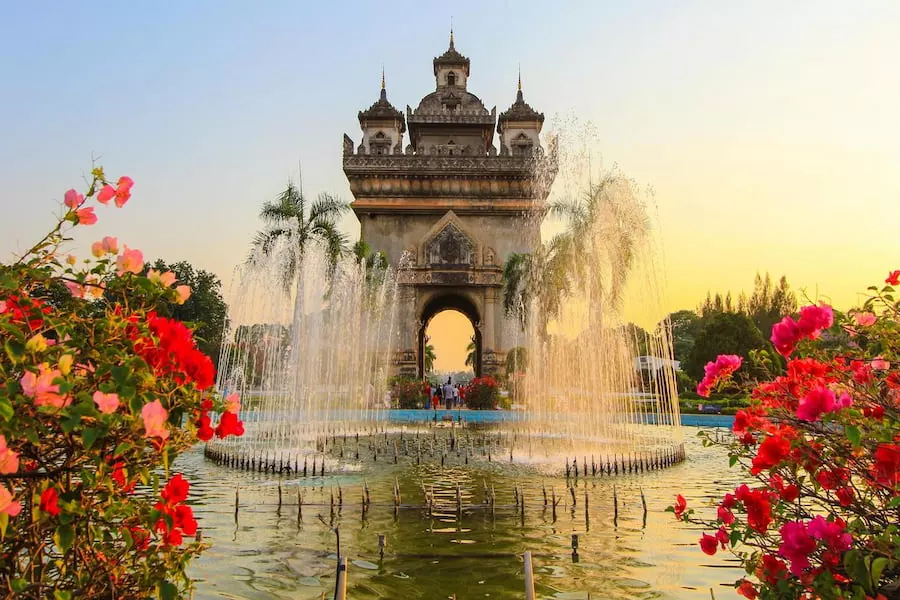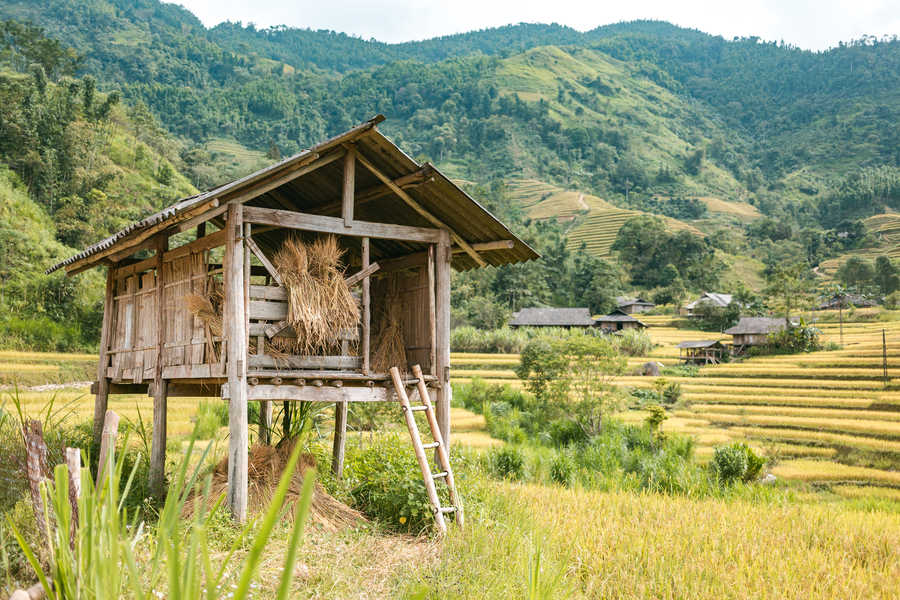The first thing that comes to mind when thinking of Hanoi, Vietnam’s over 1,000-year-old capital, is surely ‘Phố Cổ,’ its Old Quarter. With its 36 specialized streets, street vendors, and small eateries filled with enticing aromas, the heart of Hanoi is truly a one-of-a-kind destination
While the best way to experience it is perhaps simply to walk and get lost, we’ll still share some visiting tips to help you make the most of your time in this maze of streets and corners, each more surprising than the last
To explore the Old Quarter with a guide, don’t hesitate to contact us
Brief history of Hanoi’s old quarter
Hanoi’s Old Quarter is located in the northeast of the capital, within the Hoan Kiem district. The site of the old town was strategically chosen between the imperial citadel and the Red River, a location considered advantageous for commercial development
The history of the Old Quarter dates back to the 11th century, when King Ly Thai To decided to move the capital from Hoa Lu (Ninh Binh) to Hanoi. From the 13th century, Hanoi began attracting artisans from neighboring regions, who soon organized into craft cooperatives and guilds. From that time, villagers from each area clustered together on the same street, giving each street its uniform character—a feature that remains visible today.
By the 15th century, there were at least 36 artisan guilds in the quarter, which actually corresponds to twice that number—72 streets! Streets associated with a particular guild were named “Hang” (goods) followed by the type of product the guild specialized in. For example, Hang Tre Street indicated the street where bamboo (tre) products were sold. Around Hanoi, a network of markets grew, frequented by merchants who came to do business in the capital.
Merchants of the time were taxed based on the width of their storefronts, so storage and living spaces were pushed to the rear of the buildings. Consequently, the long and narrow structures known as tube houses became the symbolic image of the Old Quarter. On average, these houses are 3 meters wide and… 60 meters long
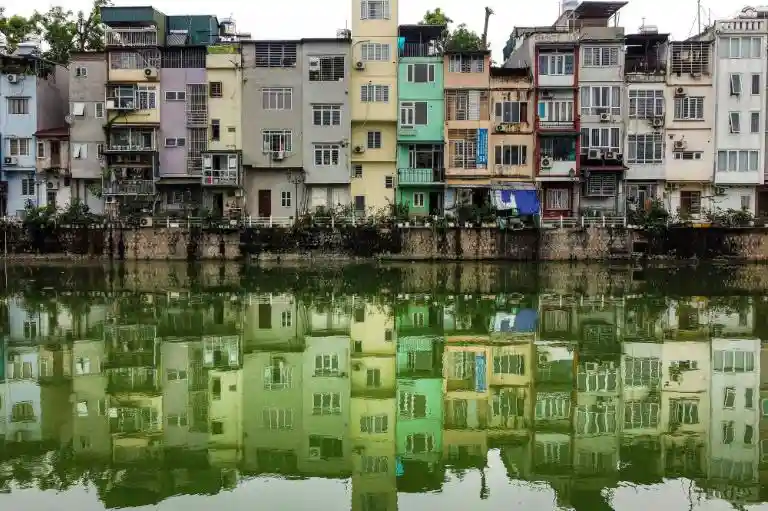
Hanoi’s tube houses, Vietnam
In the 19th century, the city’s sphere of influence continued to expand. The region became organized around the activities of these 36 streets and the villages that supplied them. The Old Quarter then grew into a lively hub with its markets and artisan guilds, while to the north and west lay the craft and agricultural villages.
With French influence from the mid-19th century, Western-style architecture took precedence over traditional Vietnamese and Chinese styles. The fusion of East and West—not only in architecture but also in culture—became the norm.
Today, there is no single dominant style in Hanoi’s Old Quarter, though French influence can still be seen in many monuments, including the famous opera house. Due to globalization, most artisan guilds and cooperatives have disappeared. Yet the street names remain: Hang Gai (Hemp/Silk Street), Hang Bac (Silver Street), Hang Ma (Joss Paper Street), and more—where traditional crafts are still sold, now alongside modern products of varying quality.
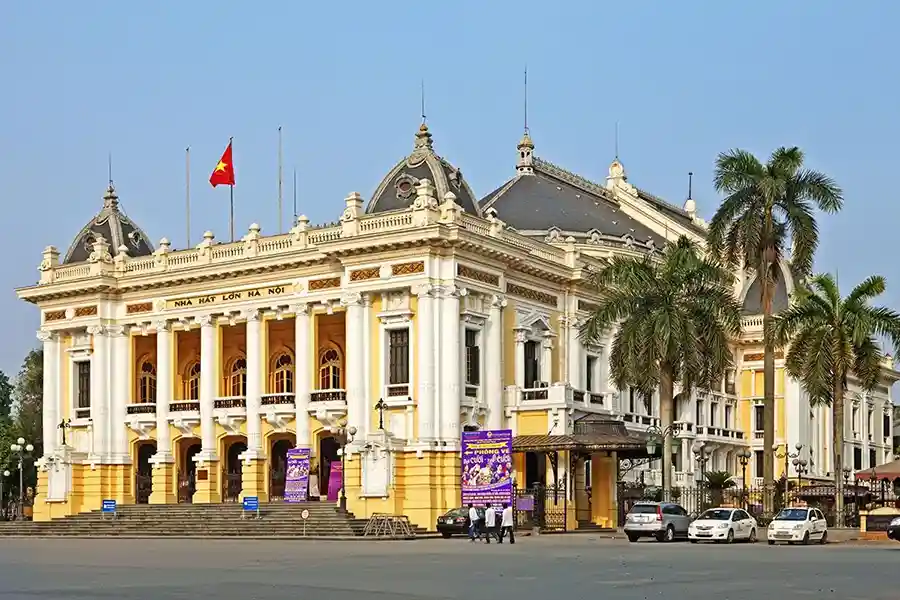
Hanoi opera house, Vietnam
What to See and Do in Hanoi’s old quarter
Hanoi’s Old Quarter is a labyrinth of narrow streets where you can find everything you never knew you needed! You’ll encounter street vendors selling fresh vegetables, hundreds of shops, restaurants, and sidewalk cafés, as well as pagodas, a metallic bridge reminiscent of the Eiffel Tower, and the famous Hoan Kiem Lake, where couples meet at dusk.
Here are some of our best ideas for exploring the Old Quarter:
Explore some of the 36 streets
Simply grab a map of central Hanoi, and you’re ready to tour the Old Quarter! Many libraries, bookstores, and art galleries are located just a few steps from Hoan Kiem Lake, so finding a map won’t be a problem.
We recommend using the large fountain at Dong Kinh Nghia Thuc Square, near Hoan Kiem Lake, as a starting point. From there, you can dive deep into the network of alleys and streets and experience the intense traffic unique to Hanoi. Along the way, you’ll spot historic houses, remnants of the glorious days of Vietnam’s most active and prosperous commercial hub.
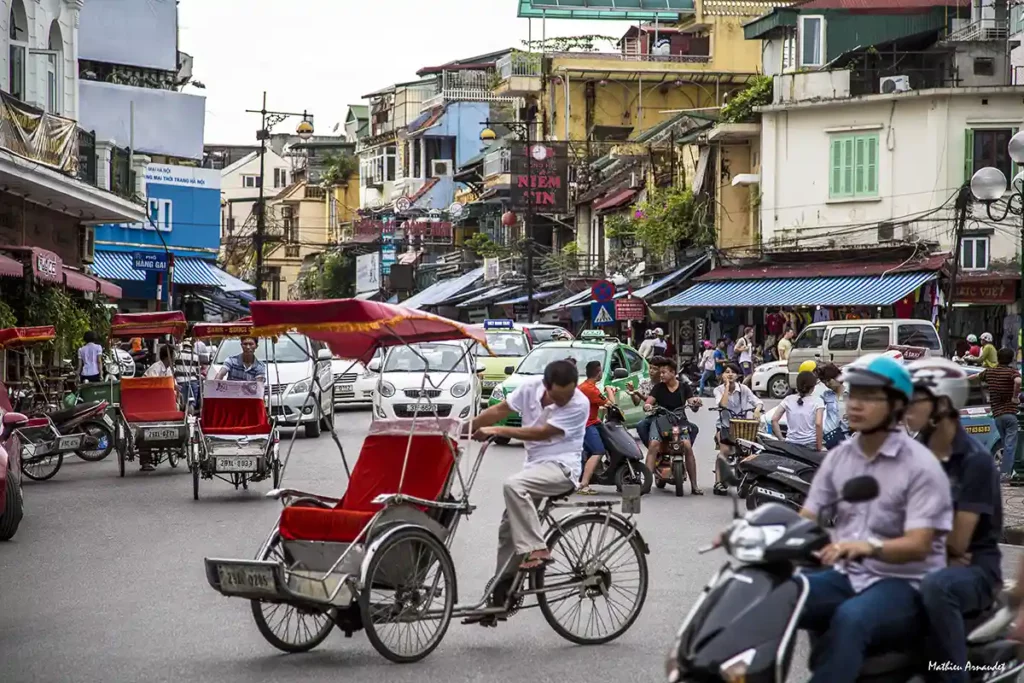
The fountain square around Hoan Kiem Lake, Hanoi. Photo credit: Mathieu Arnaudet
Here are a few streets (and their specialties) worth visiting:
Hang Gai: Silk and tailor-made clothing
Hang Ma: Traditional votive papers, now reflecting the colors of every major festival—Vietnamese New Year, Mid-Autumn Festival, and even Christmas and… Halloween!
Hang Bac: Silverware, jewelry, and all kinds of accessories
Hang Duong : Shops selling sugar, sweets, and O mai (sweet and spiced dried fruits)
Ta Hien:Cafés with terraces, beers, and street food—a bustling spot on weekends during good weather
Street food is available day and night. On weekends, motorcycles and cars are banned in the Old Quarter, allowing you to leisurely enjoy street performances on foot at your own pace.
If you prefer not to walk, two alternatives are available: cyclo rides or electric cars—perfect if you feel uneasy navigating the dense crowds of the Old Quarter!
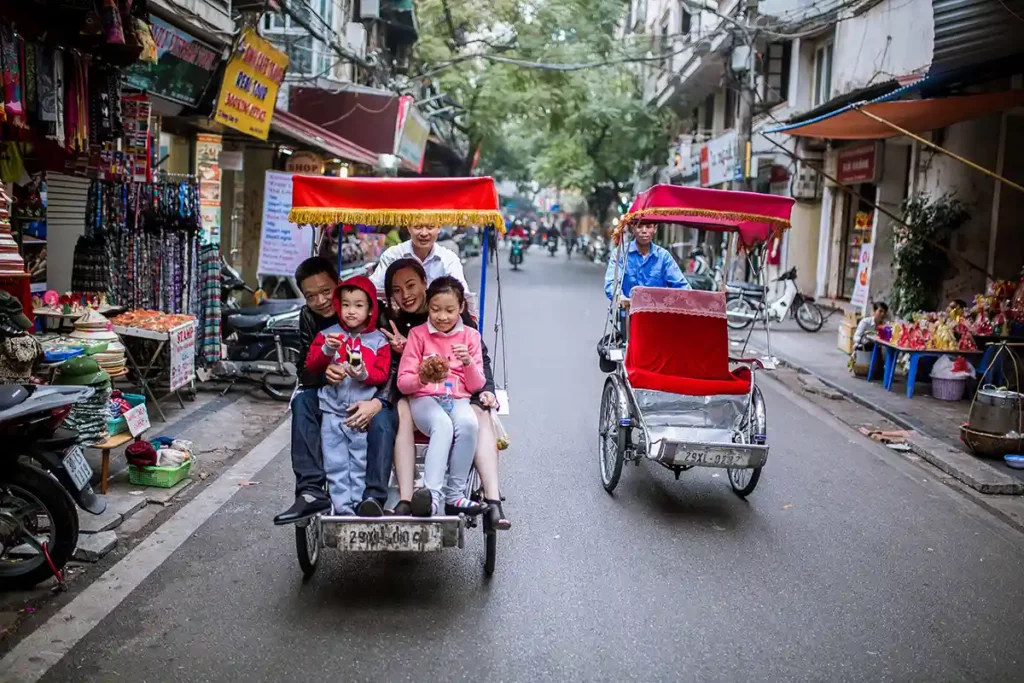
Cyclo rides through the streets of Hanoi’s Old Quarter. Photo credit: Mathieu Arnaudet
Strolling around Hoan Kiem Lake
Hoan Kiem Lake and Ngoc Son Temple (Temple of the Jade Mountain) are must-visit sites during your trip to Hanoi. Located right next to the Old Quarter, the lake brings a refreshing break from the bustling, crowded streets. After an exhausting walking tour of the quarter, where you have to weave through the ever-growing traffic of motorbikes and pedestrians, a short pause by the lake will be more than welcome!
Ngoc Son Temple is one of the best places in Hanoi to learn more about Vietnamese worship culture. The temple is dedicated to Van Xuong De Quan – the spirit of literature – and Tran Hung Dao – a national hero. The iconic red The Huc Bridge leading to the temple is, of course, a symbol of the capital.
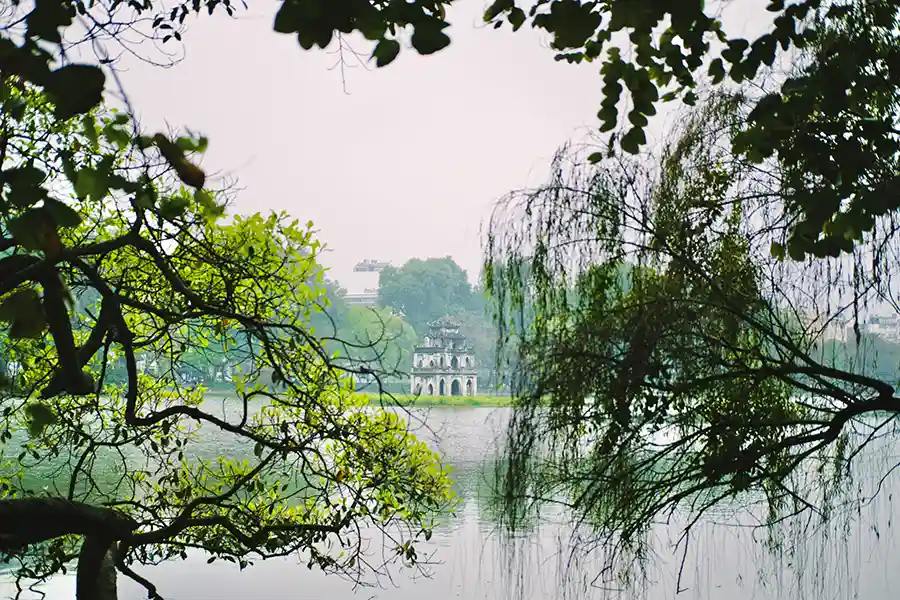
Hoan Kiem Lake, Hanoi. Photo credit : Mathieu Arnaudet
Practical Information:
- Admission fees to Ngoc Son Temple: 20,000 VND per person for foreigners;
- Opening hours: daily, from 7:30 AM to 5:00 PM;
- Dress code: no miniskirts or shorts;
- Other: avoid loud noises, do not smoke, do not cross your arms, and record videos only when permitted
Here’s a marketing-friendly English translation of your text:
“The street around the lake becomes pedestrian-only on weekends, offering children a safe and enjoyable place to play. Many activities for kids are organized here, including traditional games such as O An Quan, a Vietnamese jump-rope game, Jenga, chess, and more. These streets are also home to numerous street performers and traditional art shows, including Chèo singing performances.”
For those who enjoy exploring local culture, visiting Hoan Kiem on the weekend promises a lively crowd and a festive atmosphere!
Visiting the House at 87 Ma May Street
The historic house at 87 Ma May Street is a classic example of late 19th-century housing in Hanoi’s Old Quarter. Thanks to a partnership between the cities of Toulouse and Hanoi, the house was restored and reopened to the public on October 27, 1999. Today, it is a tourist attraction offering a glimpse into the lifestyle of a wealthy merchant a century ago. If you love history and traditional architecture, this is a must-see during your visit to Hanoi
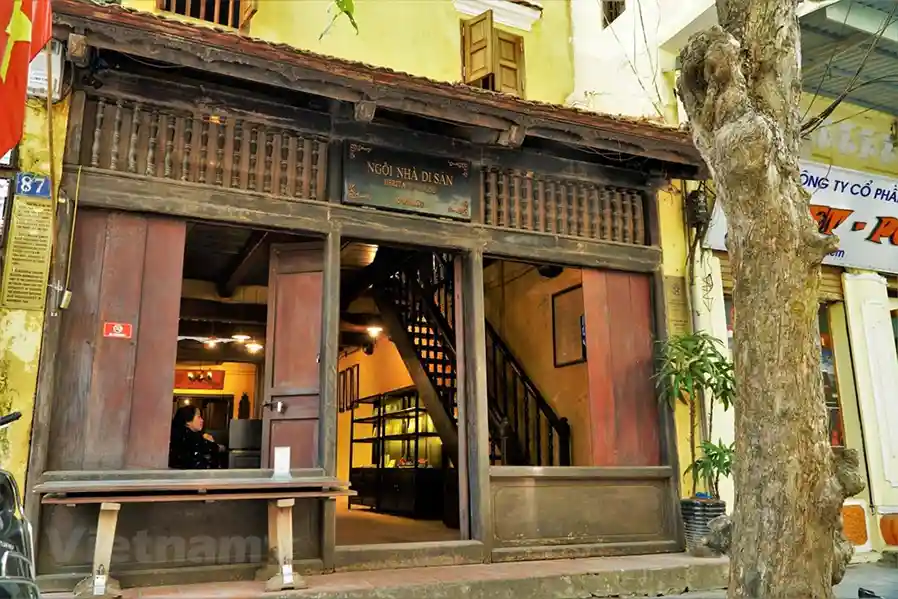
Entrée de la maison ancienne rue Ma May, Hanoi
Settling into a terrace café
Vietnamese coffee has made a name for itself with its strong flavor and aromatic scent. For a long time, coffee was all that mattered, and it could be enjoyed sitting on a simple stool right on the sidewalk. This is still true today, but the Old Quarter now boasts many cafés set in old houses.
Among the standout cafés, we recommend Loading T, located in a beautiful colonial villa. Moreover, the establishment serves a delicious egg coffee!
For coffee lovers, you can order: black coffee (cà phê đen), iced black coffee (cà phê đen đá), coffee with milk (cà phê sữa), or… the famous egg coffee (cà phê trứng). Otherwise, all cafés serve fresh fruit juices, perfect for refreshing yourself after an exhausting walk.
Enjoying a view of Long Bien Bridge
Long Bien Bridge is a legacy from the French colonial era. Just like the Eiffel Tower, Long Bien Bridge has also become a symbol representing a specific period in the city’s history. Its vintage beauty makes it an iconic spot for photographers.
To fully appreciate the bridge, we suggest two activities:
# Walking on the bridge: accessible from Long Bien Station on Tran Nhat Duat Street
# Enjoy a great view of the bridge from Café Serein (16 Tập thể Ga Long Biên, Đồng Xuân) – a beautiful café with terraces overlooking the bridge.
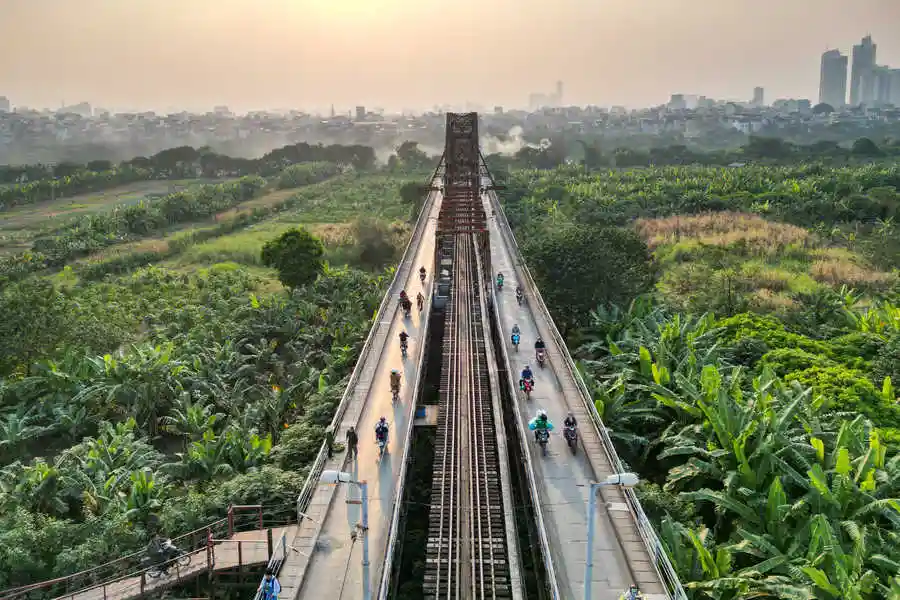
View of Long Bien Bridge. Photo credit: Mathieu Arnaudet
Shopping at Dong Xuan Market
Dong Xuan Market is Hanoi’s oldest traditional local market. Covered and bustling, it can be considered the ancestor of modern malls—the large multi-story shopping centers now found across Asia
One big difference, however: at the market, haggling is not only possible but encouraged! We recommend visiting early in the morning when the hustle and bustle is at its peak..
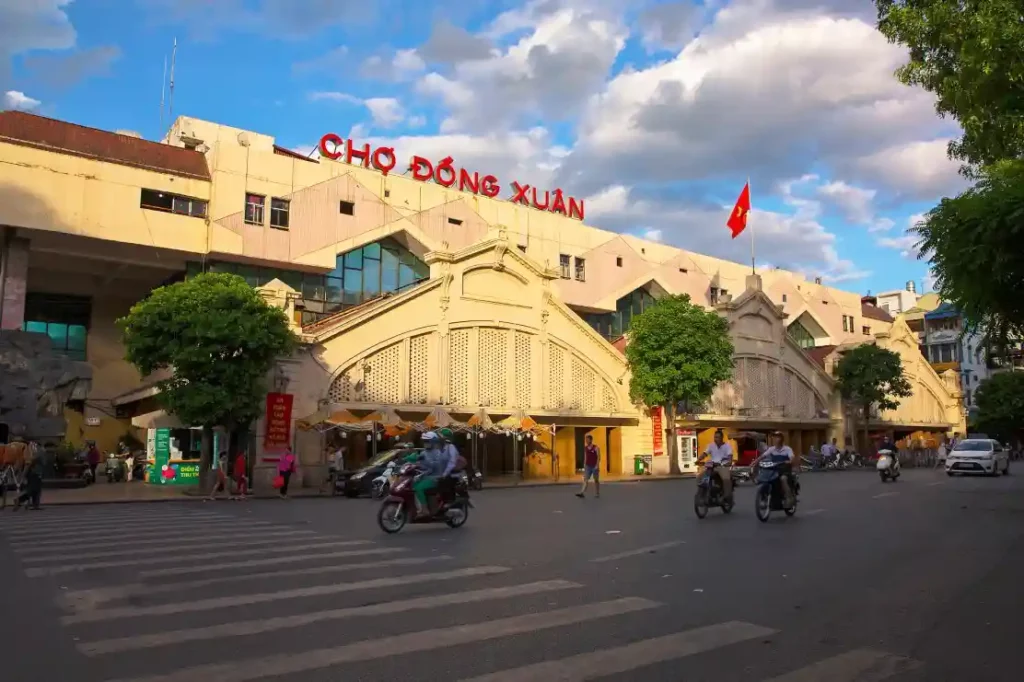
The Dong Xuan Clothing Market. Photo credit: Mathieu Arnaudet
Immerse yourself in Long Bien Market
While Dong Xuan Market operates during the day, all the activity at Long Bien Market takes place at night, on the other side of Tran Nha Duat Street. We recommend visiting either around midnight or 4 a.m. to truly see the wholesale market in full swing. Yes, these are not typical tourist hours… but they are the only way to experience it! If you enjoy photography, you won’t regret it.
Following this link will give you a better glimpse of the market’s activity.
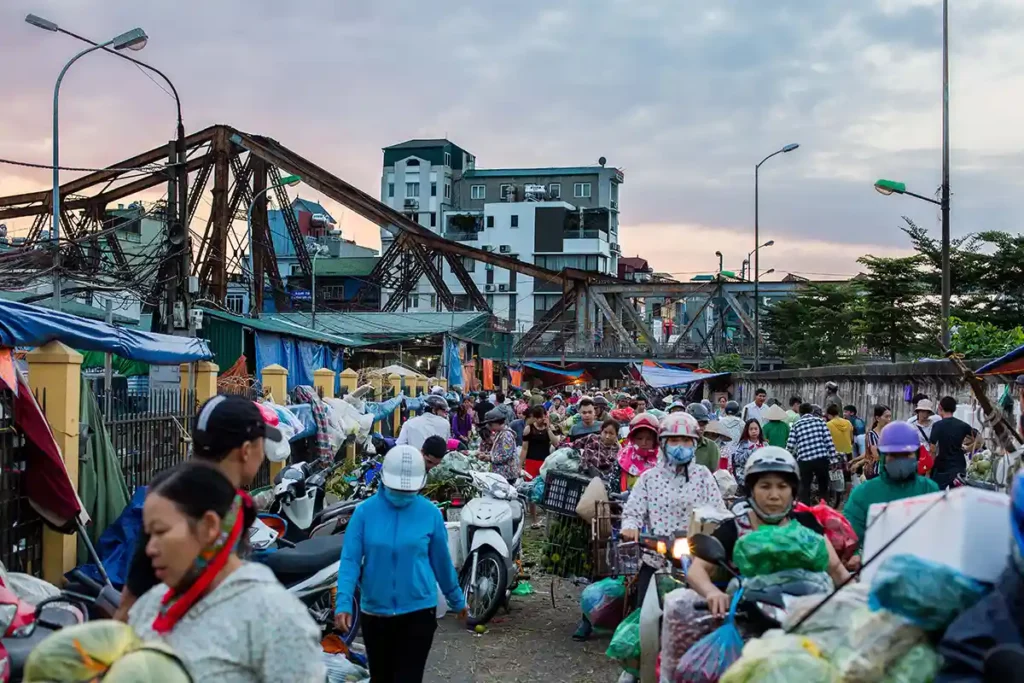
Marché Long Bien au petit matin, Hanoi. Crédit photo : Mathieu Arnaudet
The tourist night market
For those less adventurous, you can visit Hanoi’s night market, also known as the tourist market. Stalls open from 6:00 PM to 11:00 PM every Friday, Saturday, and Sunday. A wide variety of products are available, including clothing, shoes, household appliances, handicrafts, souvenirs, and more—at affordable prices, especially if you know how to haggle!
Every Saturday evening, performances take place at both ends of the market street, showcasing traditional folk arts such as Chèo, Quan Ho, and Ca Trù.
Adress : rue Hàng Đào.
Get a Massage in the Old Quarter
Despite the traffic and hustle of Vietnam’s major cities, it’s still possible to treat yourself while traveling in Vietnam.
One of the most popular activities for a moment of relaxation and well-being is to enjoy a massage at a wellness center.
Hanoi, the capital, is full of spas and massage centers that we recommend trying during your stay in the city.
>> Our ist of the best spas and massage centers
Taste the Culinary Specialties
Several culinary specialties originate from Hanoi, or more precisely from the former villages around the city that are now part of Hanoi. In the Old Quarter, we recommend trying:
Banh Mi: The famous Vietnamese sandwich! Banh mi is a blend of French and Vietnamese cuisine: French baguette, pâté, and mayonnaise meet Vietnamese meats, soy, and sauces. You can enjoy one on nearly every street corner in the capital. Today, even restaurant chains serving exclusively banh mi have emerged!
Bun Cha: This is certainly one of the dishes travelers easily remember after visiting Hanoi. Bun cha is simply prepared with rice vermicelli, pork, shallots, garlic, and a bowl of fish sauce with chili, papaya, and carrot. It is served with vermicelli and a variety of fresh herbs and vegetables in a sweet-and-sour sauce. The dish’s rich flavor comes primarily from the grilled pork. It’s a popular local dish that can be found throughout Hanoi—but enjoy in moderation, as it’s not the lightest meal!
Bun Cha, a typical Hanoian dish, Vietnam
Le Cha ca: Grilled fish is an iconic Hanoi dish, listed among the “1,001 Foods to Eat Before You Die”! Many specialized restaurants serve only Cha Ca on their menu. The dish is served with bun (vermicelli), rau hung lang (basil), roasted peanuts, fresh green onions (hanh la), dill (thi la), and, if you request, mam tom (fermented shrimp paste). The fish—often Ca Lang (Hemibagrus) or Ca Qua (Channidae)—is carefully cut into fillets, marinated in secret ingredients, and pre-grilled over charcoal before being served in a sizzling pan
An adress : Cha Ca La Vong – 14 Cha Ca Street
>> Les meilleurs spécialités de Hanoi.
Now you have all our tips to make the most of your visit to Hanoi’s Old Quarter!
Contact us to organize your visit.

